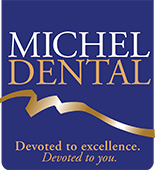Is jaw pain distracting you at work or at school? While pain on only one side of your jaw can be alarming and confusing, it’s usually not serious. In rare cases, you may need to seek urgent medical care if you are also having trouble breathing or swallowing. Here are some of the possible causes of your jaw pain and some tips to alleviate your discomfort.
Common Causes of Jaw Pain
These are three of the most likely causes of jaw pain on one side in Topeka & Silver Lake.
1. TMJ Disorders
The temporomandibular joint (TMJ) connects your jaw with your upper skull and enables you to chew, talk, laugh, and yawn. Problems that affect this unique joint are collectively known as temporomandibular joint disorders, or TMD. Multiple factors can contribute to TMD, so it may be hard to pinpoint the exact cause of your jaw pain. Issues known to play a part in TMD include:
- Grinding or clenching teeth
- Tooth damage or misalignment
- Arthritis
- Jaw infection or injury
- Damage to the cartilage in the joint
2. Sinusitis
Inflammation of your maxillary sinuses (the sinus cavities located behind your cheeks) can also cause pain on one or both sides of your jaw. Sinus inflammation typically occurs when a person catches a cold, has bad allergies, or is affected by certain medical conditions. The good news is that sinusitis often clears up on its own. However, if you have been experiencing jaw pain and other symptoms such as nasal congestion for more than a week, it may be worth checking in with a doctor.
3. Dental Problems
Jaw pain on one side in Topeka & Silver Lake can often be traced to a wide range of dental or oral health concerns, such as:
- Cavities
- An abscessed tooth
- Growth of wisdom teeth
- Gum disease or tooth decay
- Missing or misaligned teeth
- Tooth grinding or clenching
Tips for Pain Relief
If you have mild or temporary pain in your jaw, follow these tips to relieve your discomfort:
- Hold a heating pad against your cheek to relax your jaw muscles and relieve aches and stiffness.
- If you’re experiencing swelling, use a compress off and on for 15 minutes at a time.
- Take over-the-counter pain medication as directed.
- Try giving your jaw a rest by eating foods that don’t require a lot of chewing.
- If you grind your teeth due to stress, try relaxation techniques like yoga or meditation.
When to See a Doctor or Dentist
Jaw pain doesn’t always require professional treatment. However, you may want to contact a doctor or dentist if you are experiencing any of these symptoms along with pain in your jaw:
- Trouble eating, drinking, swallowing, or breathing.
- Pain that makes it difficult to move your mouth normally.
- Swelling or a fever that won’t go away.
- Severe pain that suddenly goes away after a burst of salty liquid that tastes and smells unpleasant.
No matter where your jaw pain comes from, it can be a major drag on your daily quality of life. If you think your jaw pain is related to your temporomandibular joint, don’t hesitate to contact your dentist for treatment.
About the Author
Dr. Michael Michel has nearly 40 years of experience helping patients overcome dental pain. A former president of the Topeka District Dental Society, he has completed advanced training in non-surgical TMD treatment. To learn more about the causes of jaw pain on one side in Topeka and Silver Lake, visit Dr. Michel’s website or call 785-273-0801.
